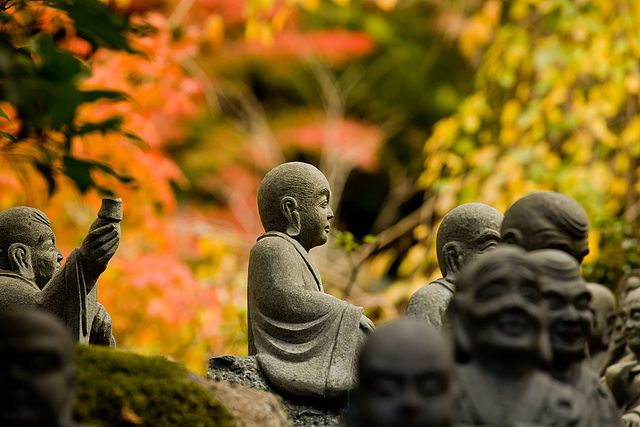Nov 29, 2021
Daisho-In Temple: The Alternative to Itsukushima Shrine on Miyajima
While it may not be as famous or frequently photographed as Itsukushima Shrine, Daisho-In Temple on Miyajima is just as beautiful and absolutely worthy of a visit. It’s so beautiful that when I go to Miyajima, I skip Itsukushima (and the crowds!) and head straight for Daisho-In.
Unlike shrines, which are Shinto, temples in Japan are Buddhist. Daisho-In Temple is part of the Shingon sect which was founded by Kobo Daishi and is headquartered at Mt. Koya (another place worth visiting) in Wakayama Prefecture. The temple is closely linked to Mt. Misen, the sacred mountain at the center of Miyajima, and is also where, in the year 806, Kobo Daishi underwent 100 days of ascetic practice. During his time at Mt. Misen Kobo Daishi lit a fire that has been burning for 1200 years. This fire is also the fire that was used to light the Flame of Peace in the Peace Memorial Park.
The large temple complex actually contains a collection of buildings that you enter via the Niomon Gate. After purifying yourself by washing your hands and mouth, you then walk up a number of stairs where, on your right, are the Dai-hannyakyo Scriptures. According to tradition, if you spin them as you go up and as you come down that you will receive great fortune.
The official map outlines 27 points of interest, but for this article’s sake, I’m going to give you a rundown of my favorites and a few tips you won’t find in guidebooks because people like to keep them to themselves!
For something visually spectacular and mind-blowingly impermanent, check out the sand mandala created by Buddhist priests from Tibet. It’s housed in the Kannon-do Hall which is also the hall with the underground passage. Yes, the underground passage which not everyone knows about and which isn’t always advertised.
Tip Number One: Go!
I was lucky enough to be by myself one day when an old Japanese man gestured to me to follow him into the depths below. Not knowing what to expect, I found myself plunged into complete darkness and having to rely on my faith and hands to guide me through. The illuminated pictures and small statues throughout were the only light and I emerged at the other end wondering what had happened. I know of only one other person who also knows about this…
Just next to the information office of the temple is also a place where you can taste the herbal tea, which is comprised of 16 herbs for good health. You can drink as much as you want, but Tip Number Two: do not fill your tea bottle with it to take away!
If you enjoyed spinning the first lot of scriptures, head to the even longer Mani Wheel which leads up to Maniden Hall. It is said that by spinning this wheel you are reading the equivalent of one volume of the Heart Sutra. The Hall itself is for those wishing to achieve contentment, good health, and longevity. In other words, it’s the hall with something for everyone!
To be honest, the real reason I visit the temple each time I go to Miyajima is for the English omikuji (おみくじ) or fortune. At only 50 yen it is well worth your money for the chance at a good fortune and if you get a less than desirable one, tie it up outside with all the others. It’s all a part of the experience when you visit a temple.
My final favorite place within the temple complex is the Hen jyokutsu Cave of Buddhist icons which is said to grant you the equivalent blessings as those bestowed upon people who take part in the pilgrimage route of the 88 temples of Shikoku. That’s quite a bargain considering the time it takes to complete the Shikoku Pilgrimage.
Daisho-In has a number of annual events including a fire walking ritual (April 15 and November 15) and a lantern ritual (September 9-11) and there are also small markets with various trinkets you can buy at any time you visit.
The road to the temple is lined with old houses and is particularly peaceful, and in autumn the temple comes alive with red, yellow, and orange leaves which make for a spectacular backdrop for photographs and the Japanese tradition of Koyo (or leaf viewing).
I guarantee that one visit will enchant you and that you will return again and again to experience the wonder of Daisho-In Temple.
Daisho-In Temple
739-0524 Hiroshima-ken, Hatsukaichi-shi, Miyajimachō, 210 (map link)
https://daisho-in.com
0829-44-0111
Freedom II Andres from Yashio Saitama, Japan, CC BY 2.0 <https://creativecommons.org/licenses/by/2.0>, via Wikimedia Commons


About the author